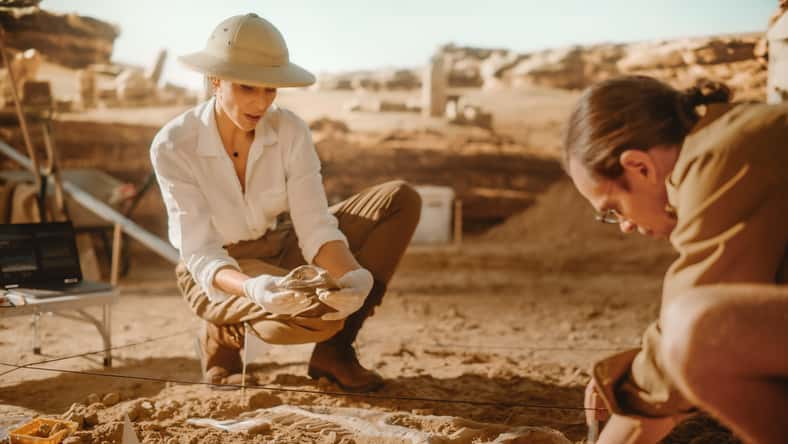Microplastics Have Recently Been Discovered In Ancient Archaeological Sites, And This Could Change How Historical Sites Are Protected

Nowadays, microplastic particles are found pretty much everywhere in the environment, from the air we breathe and the food we eat to deep within our lungs and blood.
They are also prevalent in oceans, lakes, rivers, and aquatic animals. Recently, microplastics have been discovered in ancient archaeological sites as well.
Researchers detected the presence of microplastics in soil deposits about 24 feet below the ground. Their findings were published in the journal Science of the Total Environment.
The soil samples date back to the 1st or early 2nd century C.E. They came from two archaeological sites located in York, England. Some of them were collected in the 1980s, while others were from more current times.
The scientists used imaging technology to determine the size, quantities, and composition of the microplastics.
They identified 66 particles consisting of 16 types of polymers across all samples. Even ancient sites are now contaminated with plastics, preventing archaeologists from making thorough investigations.
Microplastics are tiny plastic particles that are smaller than five millimeters in length. They are about the size of a pencil eraser and come from many different places, such as landfills, laundry, cosmetic products, and certain fabrics.
In 2020, Leigh Shemitz, president of the climate education group SoundWaters, said: “In the last not even 100 years—mostly since the 1950s—we as humans have produced eight billion tons of plastic, and the estimate is only about 10 percent of that has been recycled.”
It isn’t the first time that microplastics have been detected in soil samples. According to the United Nations Convention to Combat Desertification, nearly a third of all plastic waste winds up in freshwater or soil.

Gorodenkoff – stock.adobe.com – illustrative purposes only, not the actual people
The discoveries made in the new study have the potential to change the way archaeologists protect historic sites since microplastics can compromise the purity of remains.
Currently, archaeologists prefer to leave artifacts and other archaeological objects in the places they were originally found in order to reduce the risk of damage.
However, the appearance of microplastics in soil may mark a shift away from this practice.
“The presence of microplastics can and will change the chemistry of the soil, potentially introducing elements which will cause the organic remains to decay,” David Jennings, the chief executive director of York Archaeology, said.
“If that is the case, preserving archaeology in situ may no longer be appropriate.”
As a result, researchers are now trying to figure out how severe the threat microplastics pose to archaeological samples is.
You can read the study in Science of the Total Environment.
Sign up for Chip Chick’s newsletter and get stories like this delivered to your inbox.
More About:News





